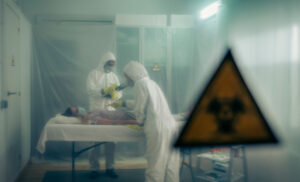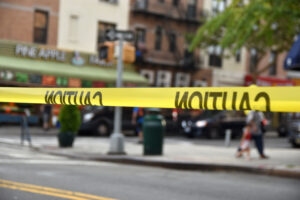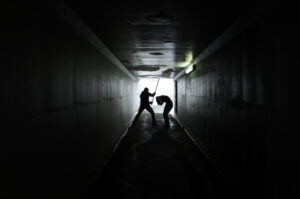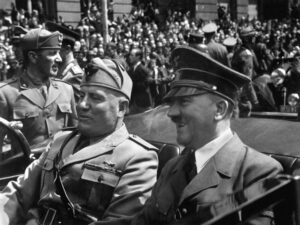A series of tornadoes struck St. Louis and east St. Louis. Two of the tornadoes, both F4 in strength, impacted St. Louis and East St. Louis.
At 6:30 P.M., May 27, 1896, two F4 tornadoes touched down near and on St. Louis, Missouri, almost simultaneously. One passed over the city and moved in a southeasterly direction, leveling entire farms in such communities as Richview and Irvington sixty miles east of St. Louis. The other, a much more powerful tornado, was the third deadliest tornado in U.S. history, responsible for the deaths of 255 people on both sides of the river before it finally petered out in East St. Louis, Illinois. People died in homes, factories, saloons, hospitals, mills, railroad yards, and churches, as the half-mile-wide swath of this killer tornado cut its way across the center of St. Louis. At least 137 people died and 300 were seriously injured. People living on shanty boats may have perished in the Mississippi River, but were not counted because their bodies were washed downstream. In east St. Louis, the swath of the tornado narrowed and, as so often happens in such circumstances, the funnel’s speed and power increased. Devastation was complete and 118 people died. Two million dollars worth of damage had been done in east St. Louis.
The tornadoes did not carry away the majority of roofs and trees in most areas. Instead, tress and roofs were thrown to the ground while homes were swept away in other areas. Lafayette Park became a wasteland of stripped trees and stumps. One record of barometric pressure was retained. It stood at 26.74 inches, a rare level of low pressure and a clear definition of the power of the tornado. A bridge across the Mississippi that had been built as tornado proof in the aftermath of earlier tornadoes was covered with iron plate, with a thickness of five-sixteenth of an inch. The tornado pierced the bridge with a two by ten inch white pine plank. The plank did not weaken the strength of the bridge but it illustrated the ability of a powerful tornado to generate missiles. On every side lay the bodies of dead horses, overturned heavy freight cars that had been lifted from their tracks in their entirety and hurled yards away, frequently plunging down embankments and landing upside down.
By the water’s edge are the battered steamboats, thrown high and dry upon the shore. Many steamboats went to the bottom of the river. One agency estimated the property loss at $50,000,000. This loss is as complete and thorough as though its equivalent in money had been thrown into the ocean, for there was so little tornado insurance carried in the city that its total barely covered a small fraction of the losses. A fund of $15,000 for the immediate relief of the homeless was quickly raised on the floor of the Merchant’s Exchange and this sum could have been increased to $100,000 if necessary. Congressman Joy introduced a resolution in Congress, arranging for the use of army tents for those who were homeless. President Cleveland promised to sign the resolution. Conditions in east St. Louis were worse than in St. Louis because of the greater power of the tornado as it reached that place.






















